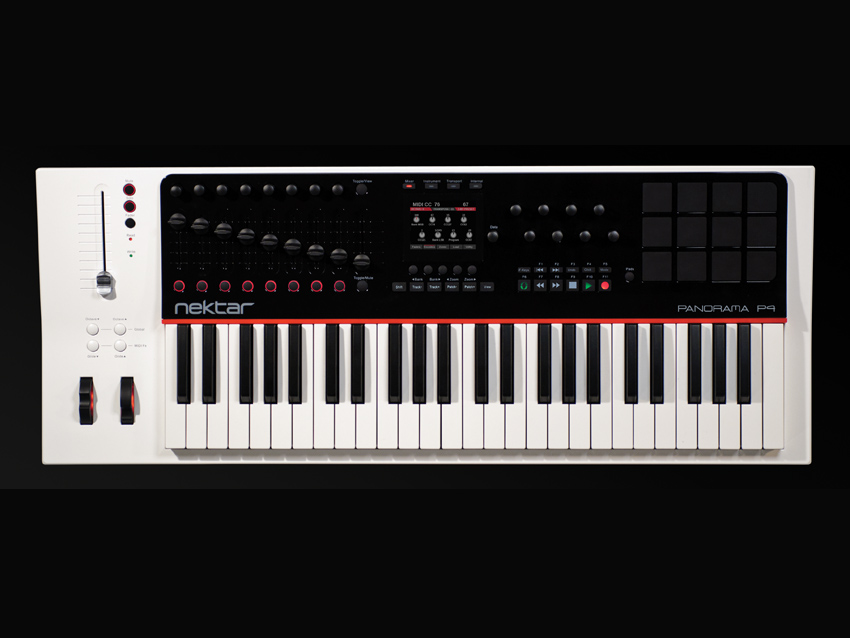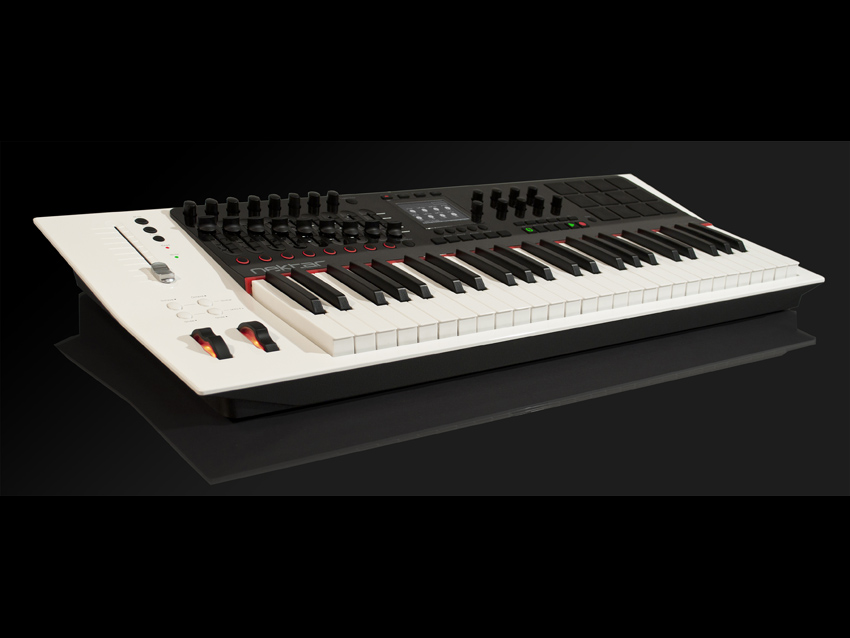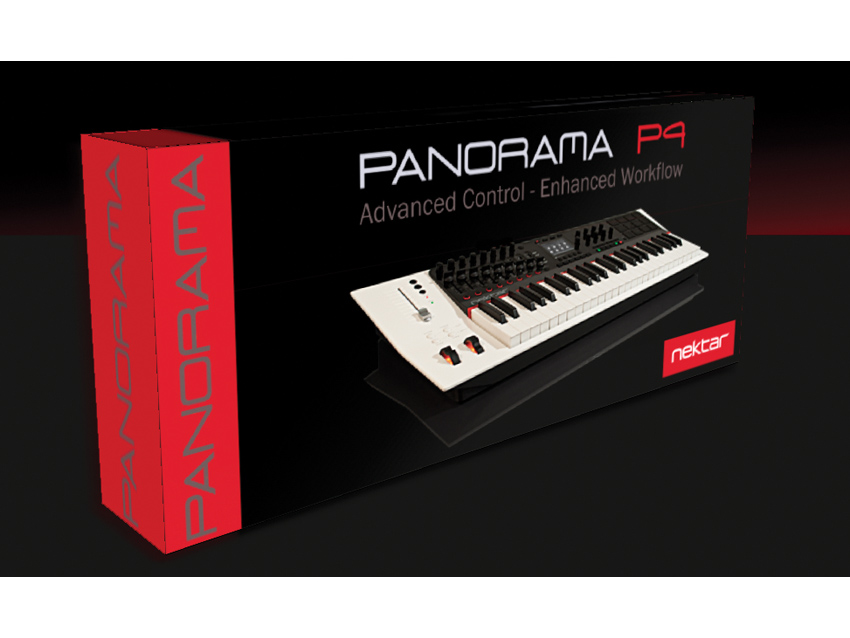NAMM 2012: Nektar Panorama P4 - full specs and price confirmed

Nektar Panorama

Nektar Panorama P4 angle

Nektar Panorama P4 box
NAMM 2012: We've been following the progress of Nektar's Panorama controller since it was announced back in October, so we're pleased to be able to tell you that this Reason-specific device will be getting its first showing at this week's NAMM show.
Click here for a gallery of Nektar Panorama P4 images
Accordingly, there's now an official press release with full specs, which you'll find below. This confirms that the controller will actually be known as the Panorama P4 (perhaps because it's got four octaves and that there may be larger and/or smaller versions on the way), and that it's expected to have a street price of around $500 when it's released in March.
Nektar Technology Panorama P4 press release
At NAMM Nektar Technology, Inc. the California based new brand for Advanced Control * Enhanced Workflow Controllers unveil Panorama P4, the first dedicated Keyboard Controller for the highly acclaimed Propellerhead Reason Music Creation Software.
Advanced Control, Advanced Workflow
Panorama P4 offers unrivalled tactile control and user transparency. From the outset Panorama P4 was conceived as an instrument intended to augment a computer music system through direct and tight integration.
The successful established workstation keyboard concepts allow for complete "on device" selecting and editing of sound with direct visual feedback, and Panorama P4 does not settle for less. It combines a comprehensive set of features, ergonomic design and complete transparency in one stunning instrument. And: there is no additional software to learn or get in the way of the creative flow.
Ergonomic Design
Great care and attention has gone in to the design of Panorama P4 with the aim to not only be functional but also inspire, set a tone and make the musician feel comfortable. Its unique design is both, comprehensive and sensible with seven distinct areas making Panorama P4 easy to operate in the studio and live. The front panel is angled, raising important controls so they are easy to see and reach. This also provides a great viewing angle for the centered hi-res display.
Want all the hottest music and gear news, reviews, deals, features and more, direct to your inbox? Sign up here.
Expressive Keyboard
The 49-note weighted synth keybed is custom designed specifically for Panorama P4 to provide both a keyboard that plays great but also blends perfectly with the overall design. It offers a choice of 5 velocity curves, each optimized dynamically but with different response emphasis. Weather heavy handed or cultivating a light touch there is always a curve that works. Monophonic aftertouch adds another dimension and the zone function enables programming 4 zones that can be switched on and off during performance.
More Control than ever
Panorama has a ton of controls, with 90 control elements assignable to a MIDI-message. In addition, buttons and pads can be assigned to ASCII messages which allows for sending shortcut commands to Reason. 20 preset locations store the assignments of controls for later recall. A preset is linked to a Pad Map, Keyboard Map and F-Keys Map so you can save and load these components independently of the individual presets. With this much control, you get the flexibility to load what you need, when you need it.
TFT Display
No guesswork here. The high-resolution display feeds back the information the musician needs, including what each control does and which buttons to press to navigate around the menus. The 3.5" full graphic display has a very wide viewing angle so it is easy to see what is going on from almost anywhere. Also, its sleek black appearance blends beautifully with the design of Panorama.
Amazing Pads
12 velocity and pressure-sensitive pads with choice of velocity curves make all the difference for percussive performances. The pads are easy to program using the "Learn Note" function and saving to any of the 20 Pad Map locations. The "Velocity Spread" feature quickly spreads one note across all 12 pads, each with its own fixed velocity, which allows for extremely nuanced dynamics. The "Scale-Function" assigns each pad to pitches within a defined scale for percussive performances with any sort of keyboard sound, while freely changing intervals or transposing the whole set on the fly.
Dedicated Reason Control
Panorama integrates and interacts with Reason like no other controller: Completely transparent and with unlimited access to all areas. Every single Reason device is mapped with parameters and their values clearly visible in the display. Switching between Mixer, Instrument and Transport mode reconfigures the entire control surface by just pressing one button. Even if you are not interested in tweaking sounds but prefer to use the comprehensive library of patches in Reason, Panorama delivers an experience like it has never been available before. Patch names are displayed clearly as you step through the current sound bank. To play Panorama adds an additional dimension and is the closest you get, to operate Reason, as if its hardware.
Specifications:
- 49-note velocity-sensitive keyboard
- Aftertouch
- Weighted synth-style keybed
- Pitch bend & Modulation wheels
- 4 keyboard function buttons
- 3.5" high-resolution TFT display
- 16 encoders
- 9 45mm faders
- 100 mm ALPS motorized fader*
- 10 assignable LED buttons
- 28 additional assignable buttons
- 12 pads with velocity/pressure sensitivity
- 4 LED mode buttons
- 5 menu buttons under display
- Pads and motorized fader select buttons
- View and mute buttons
- Sustain pedal jack (pedal not included)
- Expression pedal jack (pedal not included)
- USB port for communication with computer
- USB Micro B connector for extra and external power*
- Mac OS X and Windows XP, Vista & 7 compatible
*Two USB ports or external USB power supply required to power entire unit. One USB port powers entire unit with the exception of the motorized fader.
Pricing and availability
The Nektar Panorama P4 will be available in stores worldwide in March 2012 for Msrp US$ 599.99 Anticipated street price US$ 499.99

I’m the Deputy Editor of MusicRadar, having worked on the site since its launch in 2007. I previously spent eight years working on our sister magazine, Computer Music. I’ve been playing the piano, gigging in bands and failing to finish tracks at home for more than 30 years, 24 of which I’ve also spent writing about music and the ever-changing technology used to make it.